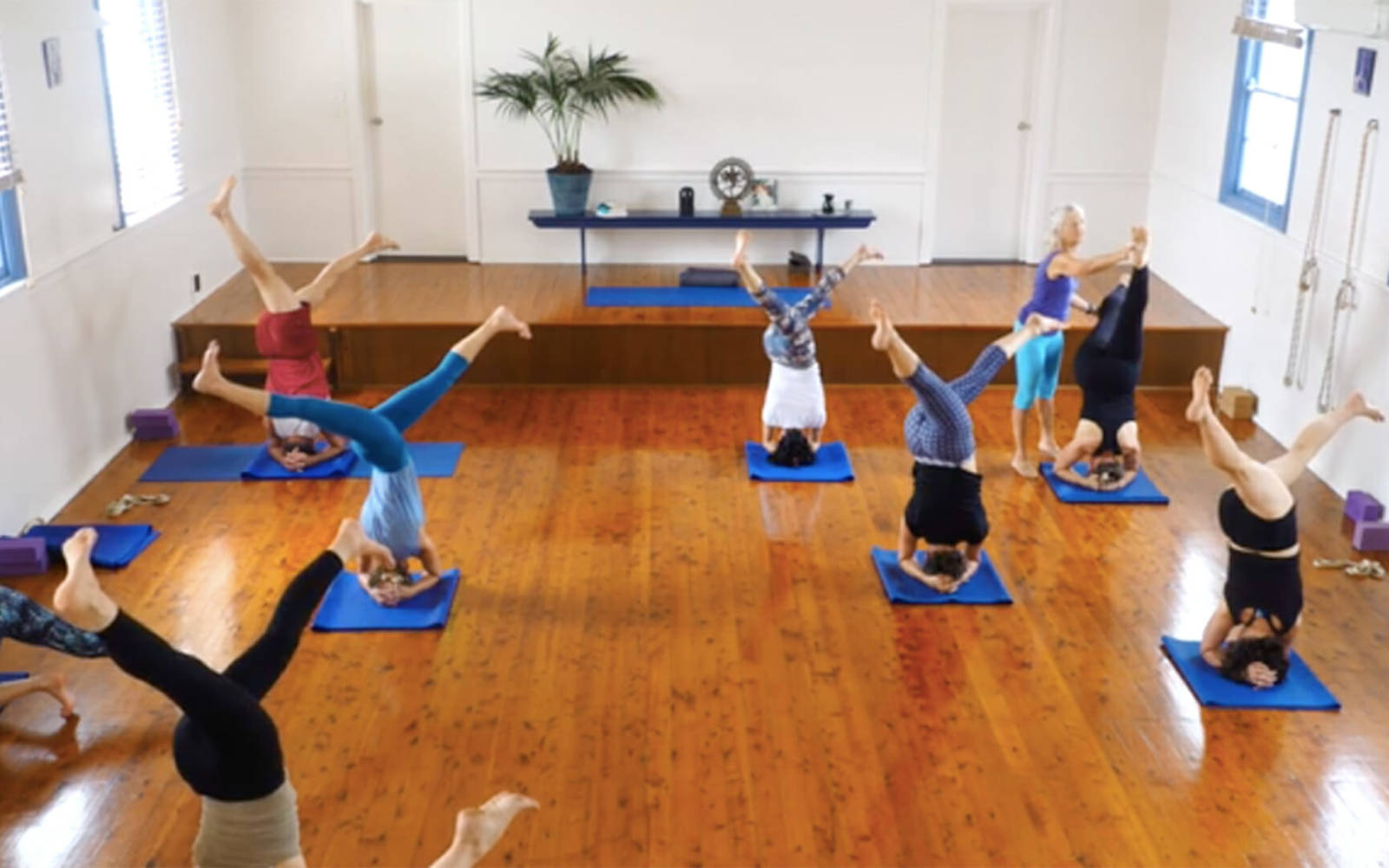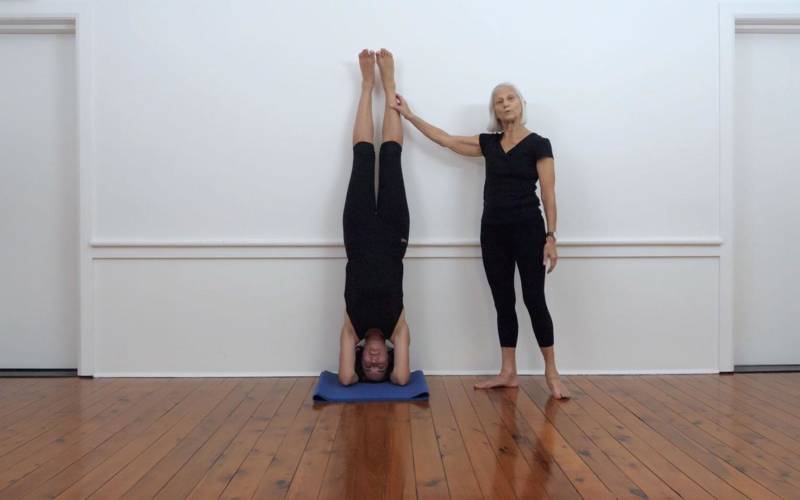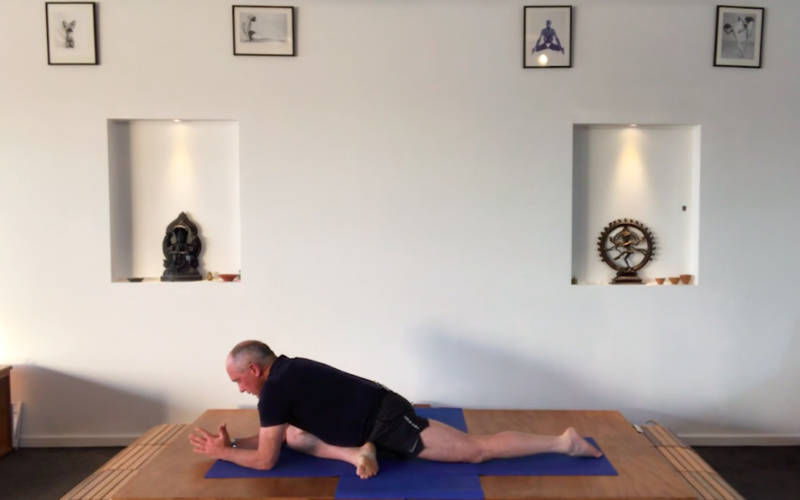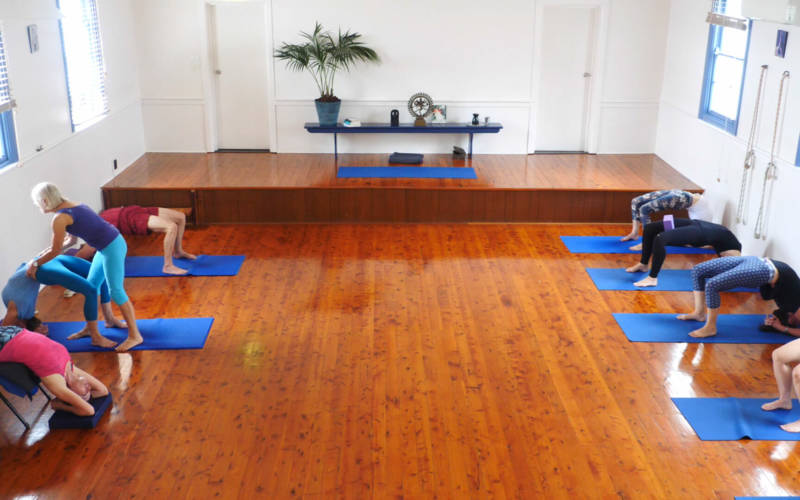How to perform Revolved One-Legged Head Stand Pose
Go up into Sirsasana. As you hold in balance, twist your torso and take your legs wide apart, extending them in opposite directions. Repeat on both sides.
What is Parivritta Eka Pada Sirsasana?
This is one of the twisted, asymmetrical variations of Salamba Sirsasana (Headstand). In this pose, your torso twists to the side, and your legs are spread wide apart. This way you add an extra challenge to the already advanced inversion.
As your spine and torso twist and your legs spread apart, your centre of balance shifts. Additionally, gravity will pull on your extended legs, adding a passive stretch to your hamstrings. All of this brings great benefits to the aforementioned parts of your body. In the long run, regular practice of this variation will increase your overall resilience and stamina, will bring lightness to your day-to-day movements, and will make you less prone to fatigue.
The twisting motion in the torso and spine, combined with the inversion, stimulates blood circulation in the area, improving its health. Moreover, being able to hold your balance while performing more complex asymmetric motions will have a positive effect both on your balance and on your ability to concentrate.
When to use Parivritta Eka Pada Sirsasana?
This is an advanced asymmetrical pose, not to be attempted without due preparation. It requires a good sense of balance as well as enough concentration to sustain the balance while shifting your weight considerably. For this reason, this pose is usually included in sequences designated for experienced students.
Another thing to keep in mind is that inversions, such as those from the Sirsasana family, are to be avoided or approached with care if you are suffering from high or low blood pressure. In order to gauge whether or not this pose is suitable for you, start out in Sirsasana Preparation or a milder inversion such as Adho Mukha Svanasana. See how you feel and consult a specialist before deciding whether you are ready.
Advanced inversions such as Salamba Sirsasana and its variations are typically performed after preparatory poses such as Adho Mukha Svanasana and Uttanasana. This way the body has a chance to get used to the increased blood flow to the brain and upper body. When you come down from this pose, you can counterbalance it with Virasana Forward or Paschimottanasana or any other neutral forward bend.




